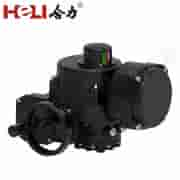
In the quest for sustainable energy solutions, hydrogen has emerged as a leading candidate. Among the innovative technologies utilizing hydrogen is the hydrogen energy electric actuator, a device that combines the principles of hydrogen fuel cells with electric actuation mechanisms. This article delves into the working principles, applications, advantages, and challenges associated with hydrogen energy electric actuators.

Understanding Hydrogen Energy Electric Actuators
Hydrogen energy electric actuators function by converting hydrogen energy into mechanical motion, typically through a hydrogen fuel cell that generates electricity. This electricity powers an electric motor or linear actuator, enabling precise control of movement. The core components include a hydrogen storage system, a fuel cell stack, and an electric actuator. The process begins with the storage of hydrogen gas, which is then fed into the fuel cell where it reacts with oxygen from the air. This electrochemical reaction produces electricity, water, and heat. The generated electricity is used to drive the actuator, allowing for controlled movements in various applications.
